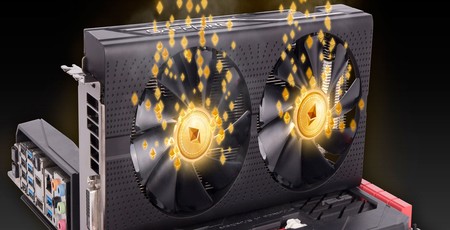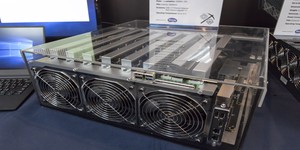
Conclusions
NiceHash shows us that regardless of which algorithm you use, the Radeon RX Vega 56 outperforms the mid-range selection, sometimes by a big margin. This is the most expensive and power-hungry card, so that’s hardly surprising. The other three cards tend to trade blows when it comes to raw performance. What really varies, though, is power consumption. Excluding the RX Vega 56, the cards can have quite dramatically different power consumption levels depending on the workload, although the GTX 1060 6GB is consistently best here. As a result efficiency really varies, leaving us with no clear winner.
There is little point trying to assess profitability with NiceHash, as variations in the market rates for each of the hashing algorithms and the fluctuation in the value of Bitcoin itself would make it irrelevant almost immediately. The nice thing about NiceHash, though, is that the software itself calculates all this for you and keeps those calculations updated, and you can easily switch to the most profitable algorithm with a few clicks. The key thing to take away is to ensure you’re able to accurately record the power consumption of each algorithm and factor this into your calculations.

Moving onto the direct mining of Ethereum, we headed to the handy CryptoCompare website to plumb in the hash rates and power consumption figures we obtained through benchmarking. We set a $0.20 cost per kWh, based on a direct conversion from 14.4 pence per kWh, the latest data available for the UK average. We also set a two percent pool fee, accounting for Ethermine and Claymore, both of which scalp one percent of your earnings each.
Doing this, and even assuming that initial outlay costs are zero (i.e. you already own the hardware), we reached a rather amusing conclusion: Not a single one of the cards tested is currently profitable for mining Ethereum.
Disregarding the pool fee, there are four elements at play here: hash rate, power consumption, cost per kWh, and the value of Ethereum.
When it comes to improving hash rate and power consumption, the obvious place to start is overclocking. Mining Ethereum is very sensitive to memory frequency. As an example, we took our GTX 1060 6GB, and tweaked the memory frequency all the way to 9.3Gbps. This took our hash rate from 19.887 MH/s to 24.649 MH/s, a 24 percent boost. Power consumption did rise from 159W to 178W, but this still gave us an efficiency boost of nearly 11 percent. Sadly, this still wasn’t enough to make the card profitable.
If you happen to have low electricity costs, for example if you pay business rates or even if you don’t pay at all (e.g. university halls), your mileage may vary, but the profit from a single card is still unlikely to be much. Even at half the rate we used, our overclock-optimised GTX 1060 would still only be making us $6.48 a month at the time of writing. To the moon!
That leaves the value of Ethereum, and that’s really the crux of the issue. At the time of writing, the price of Ethereum is in something of a crash, having gone from $1,400 in January to a little under $400 now – see above for a three-month graph from coinmarketcap.com. Had this article been written a few months ago, the outcome could have been rather different, but this highlights perfectly the volatile nature of cryptocurrency in general.
Of course, if you’re a gamer with no interest in cryptomining, then firstly how on earth did you make it this far into the article? But also, this is likely to come as good news. Cryptomining on GPUs isn’t going away any time soon, but the current slump could relieve pressure on stock levels and pricing. Indeed, having spoken to a few system integrators recently, we know there is less of a struggle for allocation than there has been in previous quarters.
The shadow of cryptomining will likely loom over the GPU market for some time to come, but exactly how much impact it will have comes down to many a factor. How far will governments and banks go to fight back against cryptocurrencies that attempt to subvert their dominance? Will there be a rush every time there’s new hardware as miners chase ever greater hash rates? If so, can (and should?) anything be done to stop this and retain stock for those who just want to game? It all remains to be seen, but it’s certainly an interesting new dynamic for the market.
Now, this has been a fun ride, but Far Cry 5 isn’t going to benchmark itself.

MSI MPG Velox 100R Chassis Review
October 14 2021 | 15:04









Want to comment? Please log in.